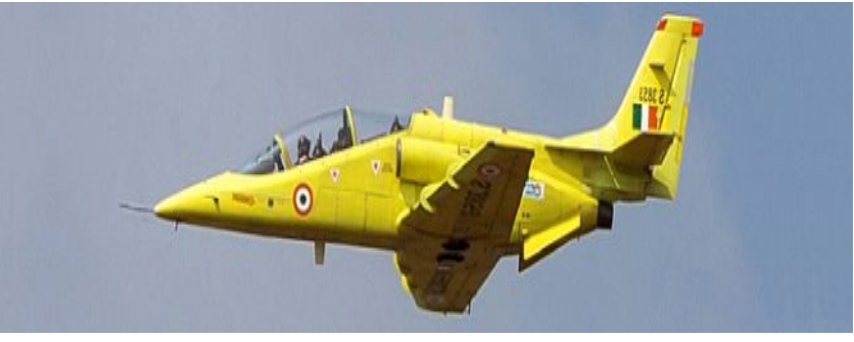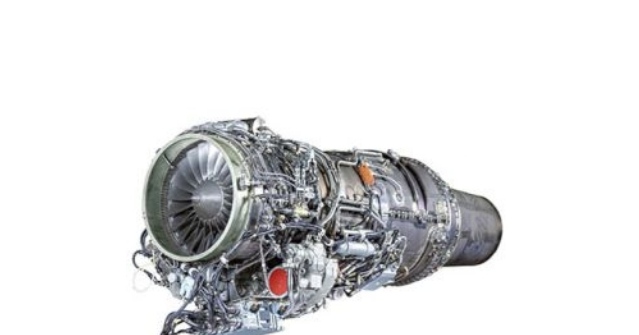HAL Gets Two AL-55I Engines For Indigenous Intermediate Jet Trainers

India’s home-made HJT-36 combat trainer aircraft inched closer towards final stage of certification tests after it received the AL-55I turbojet engines from Russia. The aircraft maker Hindustan Aeronautics Ltd. has received two AL-55I turbojet engines delivered by Russia’s United Engine Corporation (UEC) in July
The Indian Air Force imparts flying training to fresh inductees in three stages.
First Stage Basic Training :
The first stage training to flight cadets ex National Defence Academy / Direct Entry is presently imparted on Swiss made Pilatus PC7 Mk2 as its new basic trainer, replacing Hindustan Primary Trainer 32 with effect 2013. A total of 75 aircrafts have been purchased for this purpose against overall requirement of nearly 181 such aircrafts.
The PC-7 MkII is powered by a Pratt & Whitney PT6A-25C turboprop engine. It is also equipped with digital electronic engine control system. It can fly at a maximum altitude of 33,000ft. The aircraft has cruise speed of 448km/h at sea level. The maximum operating speed of the PC-7 MkII is 556km/h. The maximum range of the aircraft is 1,500km.
On 11 August 2020, the Defence Acquisition Council approved procurement of 106 HTT-40s for the Indian Air Force. This aircraft has finally been fully developed by HAL to replace the HPT32. At 2021 Aero Show, HAL received request for proposal from the IAF for 70 HTT40s with an option for 36 more. Production will take place at the Bangalore and Nashik manufacturing plants. This trainer has a Honeywell Garret TPE331 -12B turboprop engine. It can fly at maximum altitude of 19680 ft. The maximum cruise speed is 400 Km / h and max operating speed is 450Km/h. It has a range of 1000km.
Second Stage Basic Training :
The IAF was carrying out its second stage ( intermediate stage ) basic trading on HJT16 Kiran Mk2 aircrafts. However even by 2004, it’s replacement HJT36 was unable to enter service. Hence 24 x Hawk Mk132 were bought directly from Britain and flight cadets began to move directly to these Advanced Jet Trainers. By 2019, HAL had assembled another another 123 aircrafts for the IAF and 17 for the Indian Navy.
In mid-2019, HAL re commenced flight testing of the modified IJT from its Bengaluru facilities. Flight testing was put on hold after the aircraft had encountered problem in the spin test flights in the year 2016. HAL though continued its R&D efforts and undertook modification of IJT LSP4 aircraft based on extensive and comprehensive wind tunnel studies.
Currently, the spin flight testing of the single-engine aircraft has again started and progressing. The spin testing of an aircraft is the most crucial phase of its flight testing. The testing will be gradually progressed to assess the behaviour of the aircraft till six turn spins to either side to meet the targeted requirements.
Capable of training pilots in air to air, air to land and waypoint navigation, the HJT-36 boasts a composite body, a modern full glass cockpit, zero-zero ejection seats and modern avionics. It can carry a ton of armament in the form of podded guns, within visual range air to air missiles, rockets and anti-tank missiles. This makes it an effective solution against a variety of targets such as unmanned aerial vehicles, and tanks, for which a supersonic fighter aircraft would be an overkill.
Now after successful acceptance tests at the test stand in the presence of the customer’s representative, two AL 55 engines have been shipped to India from Russia. The establishment of the HJT-36 training aircraft is in the final stage of flight certification testing, which must confirm the compliance of the HJT-36 aircraft with the requirements of the Indian Air Force.
The engine’s service life was gradually increased during the project based on the UEC-Saturn facility. First from 100 to 300 hours, then to 600, 900 and now up to 1,200 hours. During this time, the AL-55I engines have been running for over 5000 hours at the test stands, and passed 4500 equivalent tests cycles,” a company official informed.
“Engines with increased service life will be used to complete this stage. The installed service life guarantees the reliable operation of the engine for a specified time. There are also plans to increase the resource indicators for 16 AL-55I engines already supplied to HAL earlier,” said Yuri Shmotin, Deputy Director General and the General Designer of the UDC.
“Besides, considerable work has been carried out to arrange the licensed production of AL-55I engines at HAL’s enterprises,” he added.
With its modular design, the engine provides high performance efficiency, manufacturability and low cost of operation. The engine’s advanced digital control system ensures safe piloting and easy maintenance. The engine has a traction index at a maximum mode of 1760 kilogram force. The service life of the engine was recently increased to 1,200 flight hours. In February this year, a HJT-36 trainer, powered by the AL-55I jet engine, took off successfully. The event took place during the international aerospace exhibition Aero India, in Bangalore.

“The AL-55I power plant installed on HJT-36 meets all latest requirements for safety, reliability and performance, which is extremely important when teaching cadets. The engine’s service life parameters have been confirmed, and now we can move to its licensed serial assembly,” said the Director for International Cooperation and Regional Policy of ROSTEC State Corporation Viktor Kladov.
Among various tests with the power plants are performance tests when being struck by foreign objects, such as birds or hail, and several specialised tests for confirming calculated parameters. The performance of the engine was confirmed under varying weather conditions. Due to its unique design that combines high performance with longevity, the AL-55I engine and the HJT-36 aircraft it powers have great potential to reinforce the Indian Air Force, Kladov noted.
The IAF, which has been struggling to fill the gaps of trainer aircraft for years. The IAF has 310 trainer aircraft — more than 100 less than the sanctioned number of 432, a parliamentary panel report revealed earlier this February.
The HJT-36 is to replace ageing fleet of Kiran Jet Trainer aircraft in service with Indian Air Force for Stage II training of its pilots. IJT incorporates the simplicity necessary for ease of conversion from Basic Piston Trainer and the sophistication required for quick conversion to the complexities of an Advanced Jet Trainer. However, there has been no indication from the IAF about a possible order for the IJT aircraft.
Third Stage Basic Training:
Once HJT36 enters the IAF service, then it will be imparting stage 2 training and third stage training will be imparted on Hawk 132 Advanced Jet Trainers.



